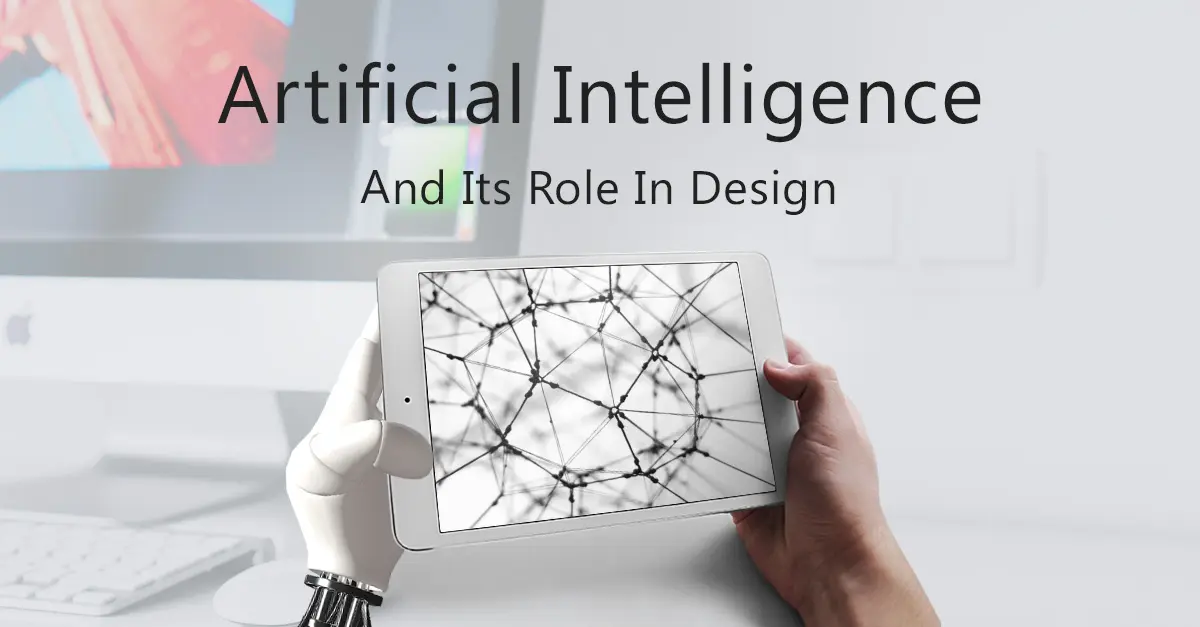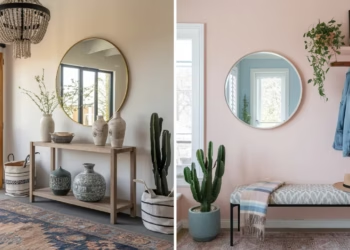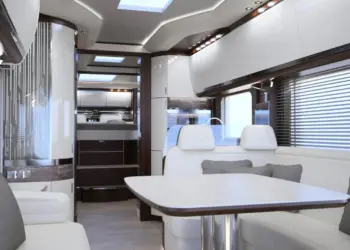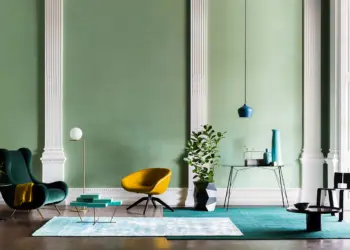Get ready to embrace the future of design, where AI isn’t just a buzzword, but a powerful tool in your creative arsenal. Buckle up, fellow interior designers, as we delve into the exciting world of Ai For Interior Design in 2024 – a landscape brimming with possibilities waiting to be explored.
Gone are the days of fearing AI as a replacement. Instead, imagine it as your ultimate design partner, amplifying your creativity and efficiency. This article is your roadmap to navigating this transformative terrain, equipping you with the knowledge and tips to leverage AI’s potential and stay ahead of the curve.
Table of Contents
Ai For Interior Design
Artificial Intelligence (AI) is transforming the landscape of interior design, offering innovative tools and possibilities for designers to enhance their craft. As we delve into the possibilities that 2024 holds, it’s crucial to understand AI’s role in the design realm.
1.1 Definition and Applications of AI in Interior Design
AI in interior design involves the use of technology to streamline processes, enhance creativity, and improve overall efficiency . From personalized design platforms to generative AI, the applications are vast and promising.
1.2 The Growing Importance of AI in the Future of Interior Design
AI is becoming an integral part of the design process, enabling designers to unlock new levels of creativity and efficiency. The evolution of AI tools signals a transformative era in the world of interior design.
1.3 Addressing Concerns and Misconceptions
While AI offers immense potential, there are concerns about it replacing human designers. We’ll debunk misconceptions and highlight how AI can be a collaborative ally rather than a replacement.

Current Landscape of AI in Interior Design
2.1 Key Trends and Advancements
The latest trends in AI-powered design tools, including generative AI, 3D rendering, and personalized design platforms .
- Immersive 3D Design: AI-driven 3D design tools now create lifelike models, enriching the design process with interactive experiences. This evolution amplifies visualization, aiding innovative exploration.
- AI in UX/UI Design: Smart algorithms analyze user behavior, enabling personalized interfaces and seamless journeys. AI enhances UX/UI design, elevating overall usability and satisfaction for users.
- Generative AI for Content Creation: In design, Generative AI autonomously produces diverse content, stimulating creativity and accelerating ideation with automated options.
- AI-Powered Personalization: Personalized design platforms, fueled by AI insights, deliver tailored recommendations in graphic and interior design. These platforms ensure designs align with individual preferences, enhancing customization.
These trends represent the forefront of AI’s impact on design, shaping more engaging, intuitive, and personalized user experiences.
2.2 Benefits of Using AI for Interior Designers
Delve into the benefits of incorporating AI into design workflows, including improved efficiency, heightened creativity, and increased client satisfaction.
- Improved Efficiency: AI streamlines design workflows by automating routine tasks, reducing manual effort, and accelerating processes. Designers can focus more on creative aspects, boosting overall productivity and project timelines.
- Heightened Creativity: Incorporating AI in design opens new avenues for creative exploration. Generative AI tools, for instance, can autonomously generate diverse design options, providing fresh perspectives and innovative ideas. Designers can leverage AI-driven insights to enhance and diversify their creative outputs.
- Increased Client Satisfaction: AI-driven design tools contribute to delivering high-quality, personalized solutions that align with client preferences. Through data analysis and personalized recommendations, designers can cater to individual client needs, resulting in more satisfying and tailored design outcomes.

The Future of AI in Interior Design: ai house design
3.1 Potential Future Applications
Identify upcoming applications of AI, such as emotional design, hyper-personalized spaces, and immersive experiences.
- Emotional Design: AI is evolving to enhance emotional design, allowing systems to recognize and respond to users’ emotions. This includes tailored interfaces that adapt based on user sentiment, creating more empathetic and engaging user experiences.
- Hyper-Personalized Spaces: AI is driving the creation of hyper-personalized spaces in various domains, from websites to physical environments. By analyzing user behavior and preferences, AI tailors content, layouts, and designs to individual users, providing a highly personalized and relevant experience.
- Immersive Experiences: AI, coupled with technologies like AR, VR, and MR, is revolutionizing immersive experiences. Designers leverage AI algorithms to create interactive and dynamic content, enhancing the depth and engagement of virtual and augmented realities.
3.2 Impact on the Interior Design Profession
- The growing influence of AI is reshaping the landscape of design professions. AI’s impact is multifaceted, automating repetitive tasks, streamlining workflows, and fostering creativity.
- Graphic designers, in particular, witness a transformation, demanding new skills for staying relevant. Continuous learning and skill upgrading are paramount as designers navigate the evolving AI-driven design landscape.
- Embracing AI’s potential requires designers to develop proficiency in AI tools, understanding its nuances, and fostering a symbiotic relationship between human creativity and machine capabilities.
- As AI continues to evolve, designers who adapt to this paradigm shift are well-positioned to thrive in the technology-infused design industry.
3.3 Insights on Adapting and Leveraging AI
Designers can thrive in the evolving landscape by embracing AI.
- Firstly, prioritize continuous learning through AI-driven design courses to stay updated on the latest tools and methodologies.
- Incorporate AI-powered design education platforms for personalized learning experiences, adapting to individual learners’ pace and style.
- Leverage AI for graphical data visualization, enhancing the product design process and moving beyond static charts.
- Collaborate with AI systems for optimized design speed and cost-efficiency. Embrace AI as a creative ally to streamline workflows, foster innovation, and future-proof design skills.

Practical Tips for Using AI in Your Design Process
4.1 Choosing the Right AI Tools
Navigate the plethora of AI tools available by choosing ones that align with your needs and workflow.
4.2 Integrating AI with Existing Design Software
Learn how to seamlessly integrate AI into your existing design software and methodology for a harmonious workflow.
4.3 Setting Realistic Expectations and Understanding Limitations
Set realistic expectations for AI and gain an understanding of its limitations to avoid potential pitfalls.
4.4 Maintaining Human Control and Creative Vision
Explore strategies for maintaining human control and preserving creative vision throughout the design process.

Conclusion
5.1 Recap of AI’s Potential
- Enhanced Creativity: AI serves as a catalyst for creative exploration, presenting designers with diverse possibilities-innovative ideas, patterns, and styles not easily conceived through traditional methods. By leveraging AI, designers break free from conventional boundaries, injecting fresh elements into projects.
- Personalization and Efficiency: Beyond inspiration, AI’s capabilities delve into personalized design. AI-driven tools analyze user preferences, tailoring designs to individual tastes. This not only heightens client satisfaction but streamlines the design process, markedly reducing time and resource investments. AI-powered workflows hallmark efficiency, allowing designers to focus on intricate aspects.
- Innovative Problem-Solving: AI excels in data analysis and pattern recognition, empowering designers in addressing complex challenges with ingenuity. From space optimization to material selection, AI augments problem-solving, providing a data-driven approach to decision-making.
5.2 Emphasizing Human-AI Collaboration
In the evolving design landscape, Artificial Intelligence (AI) functions as an innovation catalyst rather than a threat to human creativity. Human-AI collaboration is a potent force reshaping design paradigms, emphasizing transparency’s impact on trust and task outcomes. Contrary to concerns about AI replacing human creativity, the current discourse emphasizes a harmonious integration where AI enhances human expertise. AI-assisted design promises a new era of creativity and innovation, acting as a collaborator that expedites processes. Dispelling myths, the true potential lies in the synergy between human intuition, creativity, and AI’s analytical prowess.
The collaborative landscape ensures designers retain control, preserving their vision while leveraging AI’s efficiency. AI-assisted creativity represents a compelling blend of technology and human ingenuity, producing groundbreaking design outcomes. Embracing this collaboration, designers lead a transformative era, harnessing the strengths of both human and artificial intelligence for designs resonating with our ever-evolving world.
5.3 Encouragement to Embrace AI
In the rapidly evolving landscape of design, the integration of Artificial Intelligence (AI) stands as a transformative force, offering designers unparalleled opportunities for innovation and professional elevation. By embracing AI, designers can unlock new dimensions of creativity, efficiency, and problem-solving. This collaboration with intelligent technologies enables designers to transcend traditional boundaries, tapping into AI’s capacity to generate novel ideas, streamline workflows, and enhance the overall design process.
Crucially, the adoption of AI necessitates a mindset of continuous learning and adaptation. Designers who actively engage with AI tools and technologies position themselves at the forefront of industry trends. This ongoing learning journey becomes a catalyst for growth, enabling designers to harness the full potential of AI advancements. As AI continues to evolve, designers must cultivate a proactive approach to staying informed, acquiring new skills, and adapting their practices to leverage the latest tools and methodologies.
In this era of AI-driven innovation, designers become not just creators but orchestrators of a harmonious collaboration between human ingenuity and artificial intelligence. The symbiotic relationship between designers and AI fuels a cycle of perpetual improvement, where each project becomes an opportunity to refine skills, explore innovative solutions, and contribute to the ever-expanding realm of design possibilities

Bonus
1. Bonus : Case Studies of Successful AI-Powered Design Projects
- Generative Design in Architecture: AI-powered generative design tools have revolutionized architectural planning. By inputting parameters such as site conditions and project requirements, architects leverage AI to rapidly generate numerous design iterations. Autodesk’s generative design tools, for instance, played a crucial role in creating innovative, efficient, and structurally sound designs for buildings like the Autodesk Toronto Office.
- AI-Enhanced Fashion Design: In the fashion industry, AI has become a valuable assistant to designers. The IBM Watson-powered “Cognitive Dress” designed by Marchesa and IBM Watson is a standout example. This AI-driven gown analyzed social media sentiments in real-time and dynamically changed colors based on the audience’s emotional responses during a live event, showcasing the fusion of technology and fashion.
- Smart Interior Design with AI: AI has transformed interior design by offering personalized recommendations and automating mundane tasks. The collaboration between the interior design platform Havenly and AI startup KAYA is a notable example. KAYA’s AI algorithms analyze user preferences and habits, enabling Havenly to deliver tailored design suggestions and create personalized interiors that align seamlessly with clients’ tastes and lifestyles.
2. Bonus: Curated List of AI Resources and Tools
Exploring the intersection of AI and interior design is now more accessible with these curated tools:
- RoomSketcher: A popular AI-powered tool for creating and visualizing 2D and 3D floor plans, offering intuitive design capabilities.
- Decorilla: Revolutionizing room design, this AI app transforms interior spaces and is among the top choices for AI interior design.
- DecorAI: A comprehensive AI-powered interior design tool facilitating users in generating new decorating ideas through photo analysis.
- Homestyler: A robust and user-friendly platform for creating 2D and 3D interior design projects, providing a vast array of design possibilities.
These tools empower interior designers to leverage AI’s capabilities, enhancing creativity, efficiency, and the overall design process.

Remember, this is just the beginning. As technology continues to evolve, so too will the opportunities and possibilities that AI brings to the world of interior design. Embrace the future with an open mind and a willingness to explore the creative potential that AI has to offer.
FAQs
Is there any AI for interior design?
Yes, there are AI tools and platforms designed specifically for interior design tasks, offering features like virtual room planning and style recommendations.
How does AI affect interior design?
AI influences interior design by automating tasks, providing personalized design suggestions, and enhancing the efficiency of space planning and visualization.
Can I use ChatGPT for interior design?
While ChatGPT can provide information and general advice on interior design, it’s not a specialized tool for creating designs or floor plans.
Can I use AI to design a house?
Yes, AI tools can assist in designing houses by generating floor plans, suggesting decor elements, and optimizing spatial layouts based on user preferences.
Is Interior AI free?
Yes, But the availability and pricing of Interior AI tools vary. Some may offer free versions with limited features, while more advanced functionalities may be available through paid plans.
Is design AI free?
No, but Similar to Interior AI, the accessibility and cost of design AI tools vary. Free versions with basic features may exist, but comprehensive design capabilities often come with premium plans.










